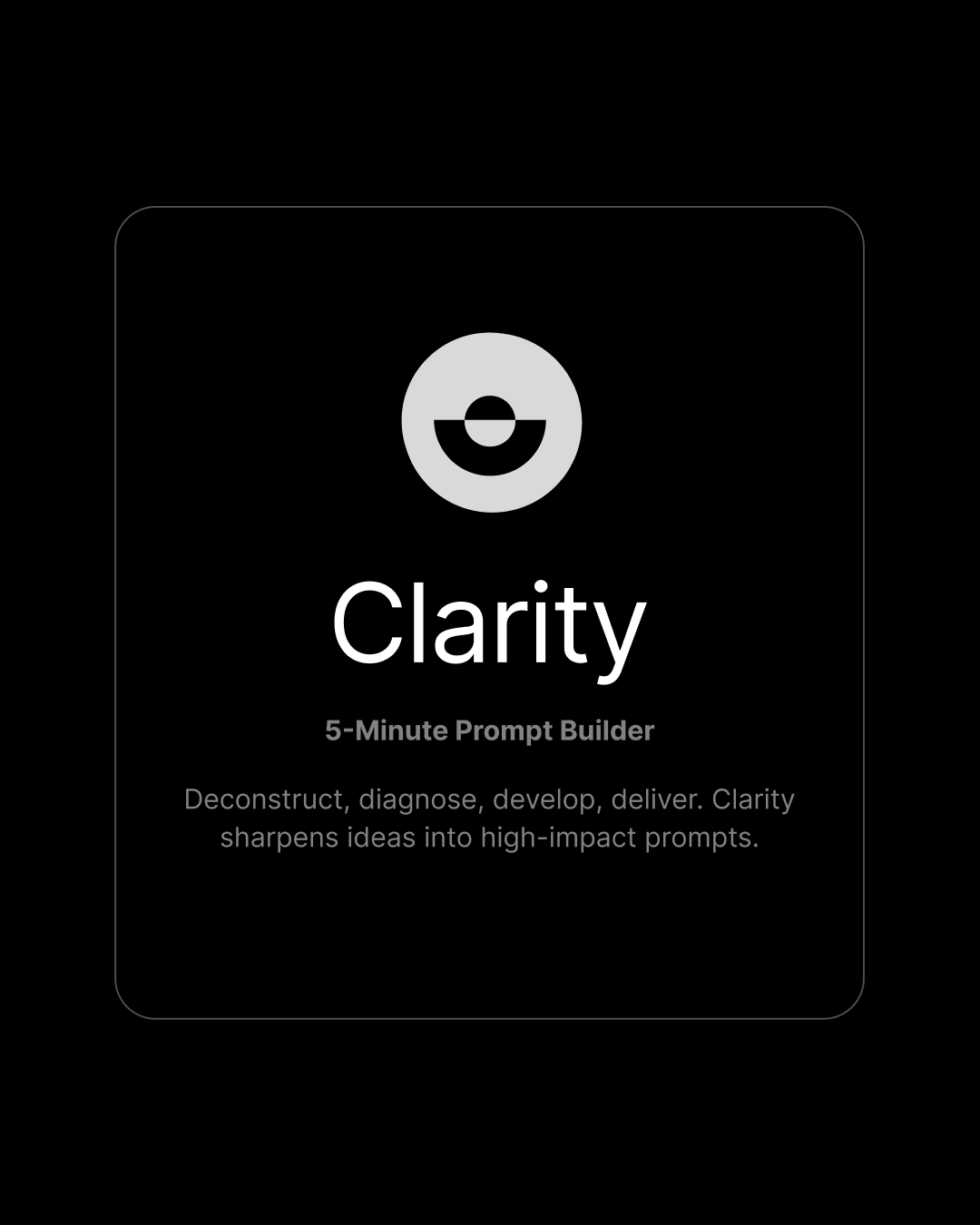AI Prompt Optimization: Structure Beats Style

Prompt quality scales with structure. We don’t start with tone or a random search querie, we start with architecture. Here are some thoughts and exploration about the 4D method of Prompt Engineering we've been playing around with, this flow helped us surface blind spots and repeat wins.
First of, you probably heard the term "Prompt Engineering" before. It refers to how we tell any AI model what we want: clearly, completely, and contextually. It’s not magic. It’s design. And, to be fair, it has taught me more about how to communicate with people than with AI.
The 4D Method we'll be exploring here: Deconstruct, Diagnose, Develop, Deliver is a method I synthesysed from hundreds of prompts I came across in Twitter and Reddit, shout out to Fabricio from sending over. What I like about it the most is that it gives structure to that design. Originally built for AI support roles like “Lyra,” this framework helpes improve creative outputs, cut ambiguity, and build prompts that actually scale across platforms like GPT-4, Claude, and Gemini. We've been using a similar method to improve our prompts internally, but I think this one synthesises it way better.
This post captures what we learned, and how we’ll be adapting it into internal tooling.
I'll go step by step of the method, which, to be fair, it's pretty close to the design thinking method, but on a more granular level.
First up: DECONSTRUCT → Strip It Down
We learned to stop assuming we “got” the request on first read. Every rough prompt hides implicit intent, entities, and missing structure. This is the one thing I ask my team to do: to never assume anything. This is how we apply it to our prompts.
Example:
Write me something for our next campaign
→ What’s missing? Platform, tone, product, audience.
Refined via Deconstruct:
Write a short-form LinkedIn post for a B2B AI product launch.
Audience: product leads at mid-size tech firms.
Goal: drive waitlist signups.
Takeaway: Intent ≠ output. Define both.
DIAGNOSE → Break What’s Vague
Deconstructing revealed gaps, but diagnosis showed where those gaps would break downstream: ambiguity, overload, or assumptions.
Early Draft
Help me explain our new tool in a compelling way
→ “Compelling” = subjective. What’s the structure? Length? Angle?
Refined via Diagnose:
Draft a 3-paragraph product intro.
Frame around a pain-point → solution → outcome arc.
Use plain, confident language.
Takeaway: Specificity isn’t micromanagement. It’s clarity.
DEVELOP → Choose the Right Tactics
This is where structure became craft. We stopped writing prompts “for ChatGPT” and started designing them based on task type + output logic.
Creative tasks needed tone cues. Technical tasks needed constraint logic. Complex tasks needed chain-of-thought or modular roles.
Early draft:
You are a UX lead reviewing an AI onboarding flow.
Identify 3 usability risks, using headings and bullet points.
Takeaway: Role + logic + format = more than the sum.
DELIVER → Format the Ask, Guide the Output
Good prompts can still fail if they’re messy. Delivery matters: organize expectations, format clearly, and flag model-specific needs.
You are a Growth Marketing AI assistant.
Summarize the following product brief in 5 bullets,
then suggest 2 ideas we can use to attract more recurrent users.
Use proper Markdown.
Takeaway: You’re not writing “a” prompt. Think of it as a thinking interface.
What We Learned
→ Prompt design = input UX. What you feed in shapes what comes out.
→ This structure helps teams speak clearly to models, not just to each other.
→ Most weak prompts fail at deconstruct or diagnose, not delivery.
→ Roles + output structure are often more impactful than fancy phrasing.
→ “Prompt optimization” is just good design.
We’re integrating this prompt logic into internal brand tools—especially where cross-functional teams need consistent AI outputs.
Here's a prompt assistant that can help you apply the 4D method to any prompt.


